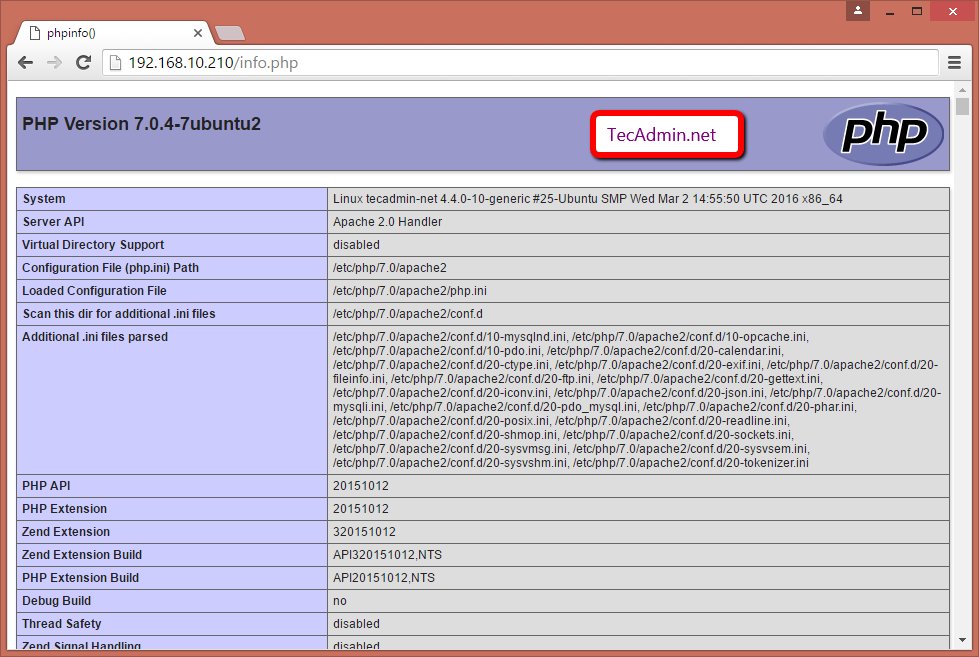Expression Web 4 Php Install Ubuntu
Posted By admin On 04/09/18I must confess, it’s been a long, long time since I’ve used a visual editor to write a web page. My text editor and I are the best of pals, and a visual development environment needs to be able to do a lot of neat stuff to impress me. So it was with a great deal of curiosity that I started poking around inside Expression Web 3, the latest version of Microsoft’s web development tool kit.Expression Web promises an intuitive and helpful web development experience. There’s support for code highlighting and completion for a number of different syntaxes; as well as the usual suspects–HTML, CSS, and JavaScript–you can also enjoy code completion for PHP, ASP.NET, and more. Testing tools include support for live viewing of PHP pages, a neat new way to test in Internet Explorer 6 through 8 (as well as Firefox), and lots of shortcuts for trying out other browsers you’ve installed.

I downloaded Expression Web 4 and the tutorials I watched used PHP so I downloaded PHP 5.6 and it went into the folder they. Expression Web 4 and PHP.
Zebra Zpl Label Printer Driver Hp Install A Fatal Error Occurred Preventing Product Use Cases on this page. more. And in a really nice touch, you can even import content from a Photoshop document, making it easy to grab image parts from layers in your PSD to include in your pages.In this how-to tutorial, we’ll create a very simple PHP page, using the experience to put Expression through its paces. In the Beginning To start, we need to grab a few key items.
Grab a Photoshop Comp We’ll build a simple PHP page using I prepared earlier. If you’d like to follow along with this tutorial, feel free to grab the comp as well. Of course, if you’re feeling adventurous, it’s a great opportunity to play with a design you already have in mind! Install Expression Web or Expression Studio.
Troubleshooting Graphics and operating system-related instructions in this book reflect the Windows 7 user interface. If your computer is running Windows XP or Windows Vista and you experience trouble following the instructions as written, please refer to the “Information for Readers Running Windows XP or Vista” section at the beginning of this book. Using jQuery in Expression Web jQuery is a lightweight JavaScript library that makes authoring JavaScript faster and easier than ever. It’s currently very popular among designers and developers alike, because it’s easy to use, flexible, and has a plug-in ecosystem that lets you add additional functionality. With jQuery, you can write simplified JavaScript that’s compatible with multiple browsers, letting you create functionality more easily than ever before.
Because jQuery is a framework library it’s possible for developers to create “plug-ins” for the framework, which add specialized functionality that extends jQuery for specific needs. Many plug-ins have already been written; you can find a list of them. After installing a plug-in, you can use its features on your pages with little to no coding. In this exercise, you will write some jQuery-compatible JavaScript and use a jQuery plug-in. Link a page to a jQuery library, write a simple function, and use a jQuery plug-in.
NOTE Start Expression Web 4 before beginning this exercise. Open the SampleSite site by selecting Open Site from the Site menu, browsing to the companion media’s default installation page, and double-clicking the SampleSite folder. With the sample site opened in Expression Web, double-click the Chapter8.html page in the Folder List panel. • Scroll the Code pane of Chapter8.html to the section and set your cursor just before the closing in the “doctitle” editable region and then press Enter on your keyboard to break to a new line. The first thing you need to do when using jQuery is link to the library itself; that’s what you will do in the next few steps. • With your cursor on a new line in the editable region within the page’s section, begin to type In this example, you are linking to the jQuery file that resides physically in the SampleSite’s folder structure—specifically, the site’s /files folder.
Using a local copy of the jQuery library as in this example is just one option for linking to the library; many designers link to the jQuery library via an external URL. Both Google and Microsoft host this library, and anyone can link to it freely. The following example script tags would link a page to the Google or Microsoft hosted jQuery library. • Click a few of the hyperlinks in the list. Notice that they open in a new window. Return to the browser view of Chapter8.html and click one of the page links on the upper-left navigation area of the page.